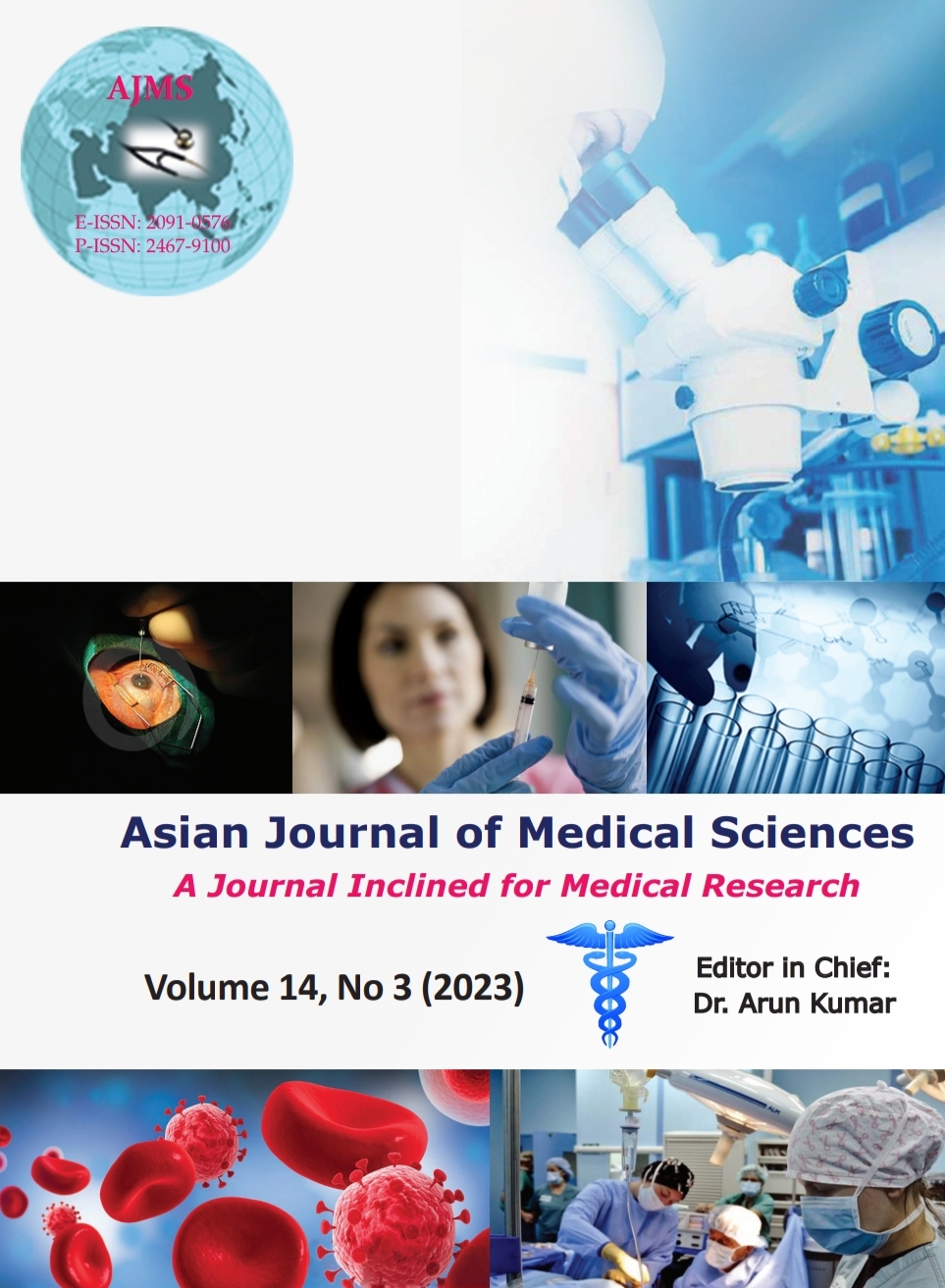Role of direct antiglobulin test in assessing the severity of extravascular hemolysis in autoimmune hemolytic anemia – analysis from a cross-sectional study
Keywords:
Auto immune; Hemolysis; Direct antiglobulin; AnemiaAbstract
Background: Autoimmune hemolytic anemia (AIHA) is an immune hemolytic disease characterized by hemolysis and anemia which results from increased red cell destruction due to auto antibodies directed against self-antigens on red cells. Clinical characteristics and potential associated hemolysis in AIHA can greatly depend on the serological characteristics.
Aims and Objectives: This study was done to find out the association of Grade of polyspecific Direct Antiglobulin test (DAT), complement involvement and immunoglobulin G (IgG) subclass with severity of hemolysis in an AIHA patients.
Materials and Methods: This was a cross-sectional study conducted for a period of 18 months from March 1, 2012, to August 31, 2013. Fifty consecutive AIHA patients diagnosed by a positive DAT in EDTA anticoagulated blood samples using poly specific anti human globulin reagent were followed up and results of various immunohematological tests such as polyspecific and monospecific DAT, IgG subtyping, and thermal amplitude were performed. Hematological and biochemical parameters such as hemoglobin, percentage of reticulocyte, total serum bilirubin, and serum lactate dehydrogenase also were recorded. Data were analyzed using SPSS v17.
Results: Majority of patients were belonging to 31–40 year age group and there was a remarkable female predilection. Secondary AIHA was more common (56%) than primary. SLE was identified as the most common underlying disorder in secondary AIHA. Majority (46%) were Grade 4 DAT positive. Predominant autoantibody identified was IgG (52%). Of the total IgG positive cases, IgG1 was the predominant subclass. C3d alone was detected in 18% of cases and C3d and IgG together in 30%. About 48% of our patients were of warm type, 32% mixed type, and 20% cold type. About 80% of the study population were treated with steroids alone. A small percentage of cases (16%) needed immunosuppressant in addition to steroids and still a smaller percentage (4%) needed splenectomy. Higher grades of DAT positivity were associated with more severe degree of anemia and hyperbilirubinemia. The study also demonstrated a positive correlation between DAT grade and severity of hemolysis.
Conclusion: AIHA patients in this study were predominantly of Warm AIHA with more of IgG1 involvement. A significant association is found between higher grades of DAT results and severity of anemia and jaundice in this study group. A positive correlation exists between grades of DCT and hemolysis as well.
Downloads
Downloads
Published
How to Cite
Issue
Section
License
Copyright (c) 2023 Asian Journal of Medical Sciences

This work is licensed under a Creative Commons Attribution-NonCommercial 4.0 International License.
Authors who publish with this journal agree to the following terms:
- The journal holds copyright and publishes the work under a Creative Commons CC-BY-NC license that permits use, distribution and reprduction in any medium, provided the original work is properly cited and is not used for commercial purposes. The journal should be recognised as the original publisher of this work.
- Authors are able to enter into separate, additional contractual arrangements for the non-exclusive distribution of the journal's published version of the work (e.g., post it to an institutional repository or publish it in a book), with an acknowledgement of its initial publication in this journal.
- Authors are permitted and encouraged to post their work online (e.g., in institutional repositories or on their website) prior to and during the submission process, as it can lead to productive exchanges, as well as earlier and greater citation of published work (See The Effect of Open Access).




